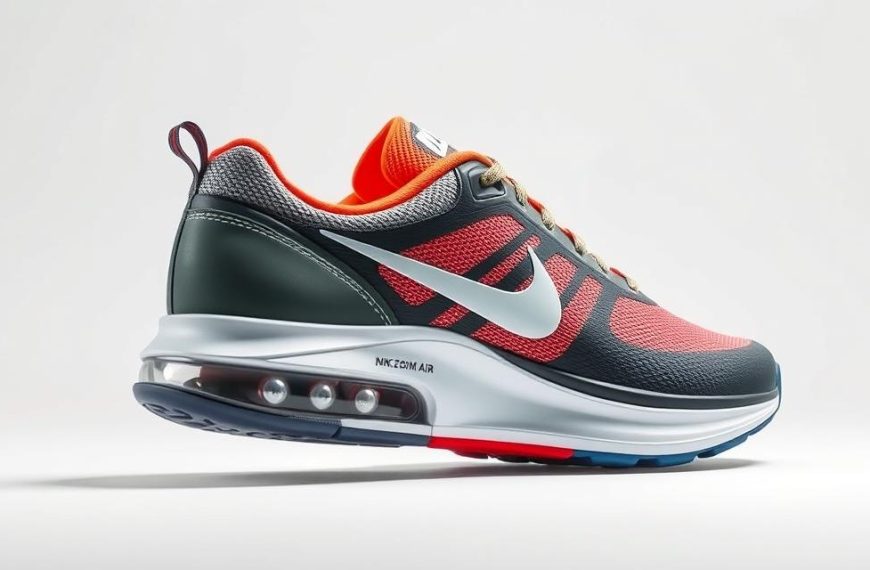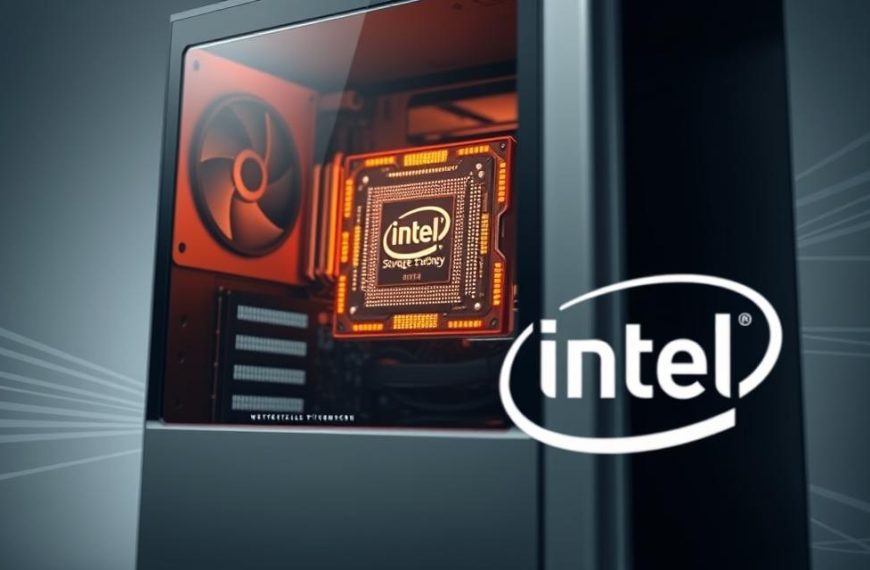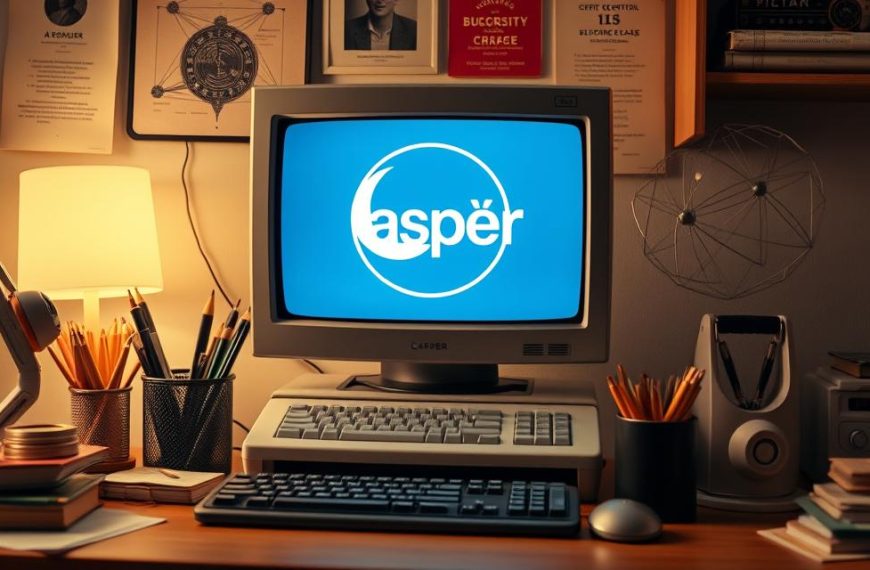The product owner acts as the guardian of vision and value within Scrum. They define priorities, hold the product backlog, and work with the development team to turn requirements into features that meet customer needs.
Clear accountability separates this role from delivery chores. The owner focuses on strategy, backlog decisions and stakeholder alignment while the team delivers increments that reduce risk and increase value.
For complex solutions, a Technical Product Owner (TPO) bridges engineering and business. The TPO guides architecture choices, lowers technical debt and helps the project scale with confidence.
This guide will cover responsibilities, ceremonies, tools, skills and career paths, plus a case study and pay benchmarks to help you apply practical tips to your projects.
What is a Product Owner in Technology?
The product owner holds the single source of truth for value, vision and prioritisation inside a Scrum team.
They create and order the product backlog from customer requirements, market insight and business strategy. Clear user stories and acceptance criteria let the development team scope, estimate and deliver predictable increments.
The role is both customer-facing and stakeholder-facing. Continuous feedback helps refine scope and keep work aligned with business goals.
Accountability for scope and priority ensures the most valuable items are worked on first. Transparency of goals, roadmap and progress comes through Scrum events and artefacts.
Effective owners understand the problem space, domain constraints and user needs. Regular refinement, inspection and adaptation keep the backlog relevant and actionable.
Collaboration, communication and trust with engineering, design and stakeholders make this role effective. Ultimately, it anchors direction and value delivery for products at scale.
Why Product Ownership Matters in Modern Software Development
Defined vision and crisp backlog priorities cut ambiguity and let teams focus on value. This clarity reduces churn and speeds up delivery by keeping scope tight and requirements well understood.
Timely decisions about scope and features shorten cycle times and lift morale. When the owner chooses what enters a sprint, the team gains predictability. Predictable delivery builds stakeholder confidence and keeps momentum steady.
Data-informed prioritisation links investment to measurable outcomes. Tracking performance and feedback lets the product owner refine strategy and improve ROI.
Continuous feedback loops from customers and stakeholders sharpen product-market fit. Sequencing work to validate assumptions early lowers risk and highlights dependencies before they block delivery.
Modern delivery models depend on empowered owners who make fast, transparent decisions. Scrum ceremonies become focal points for adaptation when guided by an engaged owner.
| Focus | Benefit | Example Metric |
|---|---|---|
| Backlog ordering | Less rework, clearer priorities | Reduction in scope churn (%) |
| Timely decisions | Faster cycle times, higher morale | Average sprint lead time (days) |
| Data-driven prioritisation | Better ROI, strategic alignment | Feature adoption rate (%) |
| Continuous feedback | Improved product-market fit | Customer satisfaction (CSAT) |
The Core Responsibilities of a Product Owner
Clarity about long-term goals guides sprint scope and helps balance technical needs with user value. The product owner crafts and maintains a clear vision that maps to organisational strategy and customer outcomes. This vision becomes the touchstone for every backlog choice and release plan.
Owning vision and strategy
The owner writes a concise roadmap and tests it with stakeholders. Regular reviews keep strategy current and aligned with business goals. Cadence and discipline make sure the roadmap drives delivery, not the other way round.
Prioritising for maximum value
Prioritisation uses risk, dependencies and constraints to order the backlog. The owner applies lightweight frameworks, trade-off analysis and clear rationale so the team can commit confidently.
Turning customer needs into user stories
User stories and acceptance criteria translate requirements into testable work. Small, well-scoped items speed development and reduce rework.
Data-informed decisions and continual refinement
Decisions rely on analytics, feedback and market signals. Continuous refinement keeps backlog items ready and balances debt, scalability and short-term delivery.
“Transparent communication of roadmap, goals and trade-offs builds trust and improves outcomes.”
- Stakeholder engagement: validate direction and secure alignment.
- Collaboration: work with the team to balance near-term delivery and long-term strategy.
- Process discipline: maintain sprint and release cadence for reliable delivery.
From Vision to Backlog: Turning Customer Requirements into User Stories
Decompose the vision into epics, then split epics into traceable stories that map back to customer requirements and measurable outcomes.
Start with structure: keep epics as outcome containers and write stories that capture a single user intent. This preserves traceability and makes prioritisation transparent.
Write effective stories using INVEST qualities and clear acceptance criteria. That reduces ambiguity and speeds development by making expectations testable.
Incorporate discovery insights, prototypes and stakeholder feedback before sprint planning. This pre-refinement saves time and avoids late changes that disrupt flow.
- Ordering techniques: apply WSJF, cost of delay or MoSCoW to balance value, risk and effort.
- Non-functional needs: record constraints alongside features so the backlog reflects both quality and functionality.
- Team collaboration: estimate, split and clarify stories together to enable steady flow and realistic commitments.
Maintain a dynamic backlog with regular refinement, removal of obsolete items and re‑prioritisation tied to data and customer feedback.
Align stories to milestones and releases, but avoid over-constraining delivery. Document the rationale behind choices so stakeholders see the “why” and outcomes stay aligned to business goals.
Collaborating with the Development Team for Effective Delivery
When the owner embeds with the team, backlog clarity and delivery speed improve markedly. A steady rhythm of planning, refinement and quick answers keeps work flowing and prevents stalled sprints.
Daily touchpoints — planning sessions, stand-ups and refinement meetings — form the core cadence. During these moments the owner clarifies requirements, sets priority and confirms acceptance criteria.
Availability matters. Rapid responses reduce wait time and rework. The owner should be reachable for questions during planning and stand-ups so the team can estimate and commit with confidence.
“Shared ownership of quality means the team and owner validate increments together and align on the definition of done.”
Sprint reviews let stakeholders validate outcomes. The owner provides feedback, captures follow‑up work and helps define next steps that preserve value when constraints emerge.
- Measure flow: use cycle time, throughput and outcome metrics to inspect and adapt.
- Negotiate scope: protect core outcomes by trading lower‑value work when limits appear.
- Coordinate: link design, QA and operations for end‑to‑end readiness.
Trust and transparency sustain predictable delivery. Give the team clear intent, then step back to support autonomy. That balance drives better software development and stronger business outcomes.
Product Owner and Scrum Master: Complementary Roles, Clear Boundaries
Distinct accountabilities for prioritisation and facilitation keep teams productive and aligned. The owner holds backlog priorities and defines goals that map to customer needs and business outcomes.
The scrum master enforces the process, removes impediments and coaches the team on Agile practices. This separation prevents role drift and keeps work flowing.
Collaboration happens through shared ceremonies where each role adds value without stepping on toes.
- The owner clarifies scope, decisions and stakeholder trade-offs.
- The master protects focus, models facilitation and improves teamwork health.
- Together they foster psychological safety and a sustainable pace for development.
“Clear boundaries let both roles amplify team delivery and avoid common anti‑patterns.”
| Responsibility | Product-oriented | Process-oriented |
|---|---|---|
| Backlog & priorities | Owner | Support |
| Facilitation & impediments | Advises | Scrum master |
| Stakeholder engagement | Owner | Alignment & communication health |
| Scaling partnership | Coordinates across teams | Maintains consistent process |
what is a product owner in technology: skills, competencies and mindset
Successful delivery depends on an owner who blends clear intent with tactical follow‑through. This mindset centres on outcomes, curiosity and resilience under uncertainty. It drives choices that balance short‑term wins with long‑term health.
Communication, leadership and stakeholder management
Clear communication translates technical detail into business value for non‑technical audiences. Regular, concise updates set expectations and reduce friction.
Leadership without authority motivates the team with vision and purpose. Expectation setting, prioritised trade‑offs and calm conflict resolution keep stakeholders aligned.
Business analysis, market awareness and customer empathy
Analytical skills let the owner interpret data, run experiments and make timely decisions. Market research and journey mapping reveal customer needs that feed the backlog.
Domain knowledge speeds up judgement and limits risk. Continuous learning—reading, interviews and retrospection—keeps knowledge current and improves value delivery.
“Outcome focus, coupled with clear communication, makes decisions faster and teams more confident.”
- Core mindset: outcome orientation, curiosity, resilience.
- Practices: regular stakeholder checks, data reviews, customer interviews.
- Result: faster development cycles and sustained product value.
Technical Product Owner: Bridging Business and Engineering
A Technical Product Owner translates strategy into practical engineering tasks. They join business aims with code-level realities, helping teams make durable choices that deliver value.
When extra technical stewardship adds value
Bring a TPO on board for complex systems, many integrations, strict compliance or tight performance needs. In such contexts, the role prevents late surprises and speeds delivery.
Reducing technical debt and protecting feasibility
The TPO prioritises refactors, platform upgrades and enablers alongside features. They maintain a technical backlog that complements the product backlog and keeps engineering healthy.
- Early validation: partner with engineers to test assumptions and avoid costly rework.
- Decision support: guide choices on stack, APIs and integrations aligned with strategy.
- Risk management: estimate effort, expose dependencies and sequence work for steady flow.
“Strong technical stewardship shortens feedback loops and makes delivery more predictable.”
Product Owner vs Technical Product Owner vs Product Manager
Clear role boundaries remove confusion and speed decisions across product teams. This section contrasts three common roles and explains how decision rights, interfaces and technical influence differ.
Focus areas and decision rights
Owner: prioritises customer value and backlog items, owning scope and sprint priorities.
Technical lead: focuses on feasibility, architecture and integrations and advises on technical approach.
Product manager: drives market strategy, roadmap and commercial outcomes and owns positioning.
Stakeholder engagement and team interfaces
The owner engages business stakeholders and users. The technical lead works closely with engineers and architects. The manager aligns executives and go‑to‑market teams.
Architecture influence and technical capabilities
The technical lead partners with Solution Architects, informs trade‑offs and protects non‑functional requirements. This prevents late rework and preserves delivery pace.
“Shared knowledge and clear hand‑offs keep decisions fast and accountability obvious.”
| Area | Primary decision | Main interface |
|---|---|---|
| Scope & prioritisation | Owner | Business, team |
| Technical approach | Technical lead (recommend) | Engineering, architects |
| Roadmap & market | Product manager | Executives, sales |
Working with Stakeholders: Aligning Needs, Value and Roadmap
Regular, structured outreach surfaces changing needs and turns feedback into usable backlog items.
Map stakeholders by influence, interest and delivery impact. Schedule cadences—monthly reviews, fortnightly demos and ad‑hoc deep dives—so expectations stay aligned.
Translate stakeholder input into prioritised backlog entries that link to measurable value. Use hypothesis statements and acceptance criteria so the team can estimate and plan with clarity.
Present roadmap options with trade‑offs and explicit omissions. Saying what not to build keeps focus and protects capacity for high‑value work.
“Data-backed trade-offs sustain trust when priorities shift.”
Use analytics, customer feedback and experiments to justify decisions. Transparent progress reports and clear metrics make changes credible and reduce friction.
- Validate features with demos, betas and targeted surveys to confirm they meet customer needs.
- Coordinate releases with sales, marketing and support so adoption and training are ready.
- Manage conflicts constructively; escalate only when decisions affect strategy or cross-portfolio dependencies.
Consistent messaging across updates keeps stakeholders supportive and preserves momentum. Align backlog, roadmap and business strategy to ensure dependencies are visible and managed.
| Activity | Purpose | Cadence |
|---|---|---|
| Stakeholder mapping | Understand influence and needs | Quarterly |
| Demo & feedback | Validate assumptions and features | End of sprint / Fortnightly |
| Roadmap review | Present options, trade‑offs and priorities | Monthly |
| Cross‑function sync | Release readiness with sales/marketing/support | Pre‑release + weekly in release window |
Processes and Ceremonies: How Product Owners Enable Agile Teams
Regular cadence and crisp preparation turn meetings into tools that protect flow and value. Ceremonies are not bureaucracy; they are rehearsal for good delivery. The owner and team rely on them to make decisions fast and visible.
Backlog refinement, sprint planning and reviews
Refinement keeps the top of the backlog ready. Short, focused sessions split large items, add acceptance criteria and tidy estimates so work can start without delay.
During sprint planning the owner clarifies goals, orders items and negotiates scope with the team. Clear user stories let developers commit with confidence.
Sprint reviews are the primary feedback loop. The owner collects stakeholder feedback, validates increments and updates priorities for the next cycle.
Maintaining transparency: inspection and adaptation
Visible backlogs, agreed definitions of ready and done, and shared metrics make progress obvious to everyone. Transparency reduces rework and builds trust.
Manage mid‑sprint changes responsibly: protect sprint goals, decide what rolls forward and record rationale. Work with the scrum master to keep cadence and remove impediments.
“Data from flow and outcomes should guide backlog decisions and process tweaks.”
- Timebox preparation and meetings to maintain focus.
- Use flow and outcome metrics to adapt priorities and process.
- Balance predictable delivery with room for new insights.
Tools of the Trade: Backlog and Workflow Management
Backlog and workflow platforms turn strategy into tracked tasks that teams can act on daily.
Common tools such as Jira, Trello and Asana let an owner configure boards for clarity and flow. Use columns to show state, labels for risk and swimlanes for initiatives.
Structure work by epics, stories and tasks so each item maps to value slices and traceability. Keep stories small and link them to epics for clear lineage.
Dashboards and reports expose throughput, ageing and predictability. Track cycle time, work in progress and blocked items to spot trends fast.
Integrate technical backlogs with the main backlog to balance feature delivery and enablers. This lets technical work surface in prioritisation and protects long‑term solutions.
Apply workflow policies — WIP limits, definitions of ready and done — and add templates and automation to reduce admin. Collaborative grooming inside the tool captures decisions and acceptance criteria for the team.
Governance matters at scale: manage permissions, maintain audit trails and evaluate tools regularly so configuration reinforces the desired process and business outcomes.
Education, Certifications and Experience for Product Owners and TPOs
Formal study and practical training combine to prepare effective product leaders. Employers commonly expect a bachelor’s in Computer Science, IT, Engineering or Business. Alternative pathways — conversion courses, bootcamps or technical apprenticeships — also lead to strong candidacy for product roles.
Degrees, on-the-job training and continuous learning
On-the-job experience teaches company-specific processes, domain context and stakeholder dynamics faster than classroom study alone. Pairing mentorship with rotation across design, development and support builds broad knowledge and useful contacts.
Continuous learning matters: AI, data practices and DevOps keep changing how teams deliver value. Portfolios and case outcomes often matter more than badges; show measurable results from features, experiments and releases.
Scrum and scaling certifications, and industry-specific credentials
Widely recognised certificates include CSPO, CSM and SAFe PO/PM for scaled frameworks. For technical credibility, AWS, Azure cloud certs and TOGAF strengthen a TPO’s architecture and platform knowledge.
| Route | Typical benefit | When to choose |
|---|---|---|
| Bachelor’s (CS/IT/Engineering/Business) | Strong foundation for development and management | Entry hires and those aiming for technical leadership |
| Certifications (CSPO, CSM, SAFe) | Validated Scrum skills and scaled practice | Owners seeking role credibility and process fluency |
| Technical certs (AWS, Azure, TOGAF) | Architecture and cloud competency for TPO duties | Complex systems, integrations or platform work |
| On-the-job training & mentorship | Contextual experience and stakeholder handling | Learning company products, processes and domain needs |
Sequence learning to match career goals: start with core Scrum knowledge, add domain or cloud credentials as needed, and apply learning through live work. Join communities of practice and seek mentors to accelerate growth.
“Real outcomes and demonstrated delivery trump certificates alone.”
Career Path and Salary Outlook in the United States
Career routes often begin with analyst roles and evolve into leadership through measured delivery and stakeholder influence.
Entry to senior roles typically moves from associate or analyst positions to junior owner roles, then onto senior owner or product manager and into director-level management. Lateral moves between product manager and ownership roles are common and can reshape scope and pay.
Factors that influence pay include geography, company size and industry maturity. Tech hubs and finance sectors usually pay higher, while smaller firms offer broader remit but lower base salary.
How technical skills and certifications impact earning potential
Technical depth commands a premium. Roles blending ownership with architecture or integration often add 10–25% to base pay.
Certifications such as PMP, Scrum Master or SAFe and demonstrable outcomes strengthen negotiation position and shorten promotion paths.
US benchmarks: Technical owners average about $99,200 annually, range roughly $85,000–$130,300, with hourly rates near $57.50 (about $44.50–$75.50).
| Career level | Typical salary (USD) | Common scope |
|---|---|---|
| Associate / Analyst | $55,000–$80,000 | Requirement gathering, small features |
| Junior owner / PM | $80,000–$100,000 | Sprint priorities, single team delivery |
| Technical owner / Senior PM | $95,000–$130,000 | Multi-team coordination, architecture influence |
| Director / Head of product | $130,000–$180,000+ | Strategy, portfolio management, stakeholders |
- Scaled experience: work across multiple teams increases market value and opens leadership tracks.
- Negotiation levers: impact evidence, portfolio case studies, market data and clear role scope.
- Stay relevant: continuous learning, shipping outcomes and leadership behaviours compound value over time.
Focus on durable skills—decision-making, stakeholder influence, data literacy and clear communication—to advance pay and responsibility across the US market.
Scaling Product Ownership: Multiple Teams, Architecture and Delivery
When several teams deliver a single outcome, orchestration becomes the primary lever for predictability. A Technical lead can consolidate technical work across up to ten Scrum teams and sequence flow so objectives meet delivery windows.
Co‑ordination patterns and unified backlog
Create a single technical backlog to manage cross‑team dependencies. Govern it with clear acceptance criteria and a lightweight policy for prioritisation.
Architecture and parallel delivery
Partner with Solution Architects to define interfaces and guardrails. Structure work so teams can run in parallel without breaking architectural integrity.
Tooling, ceremonies and visibility
Use dependency maps, visual boards and PI planning to align strategy with sprint execution. Regular syncs keep stakeholders aligned and risks visible.
“Sequence technical flow logically across teams to protect delivery rhythm and outcome.”
| Focus | Practice | Benefit |
|---|---|---|
| Unified backlog | Centralised technical items, cross‑team ranking | Fewer hidden dependencies |
| Architecture governance | Architect reviews, interface contracts | Safer parallel work |
| Cadence | PI planning, synchronised sprints | Predictable delivery windows |
| Metrics | Cycle time, blocked age, feature lead | Faster inspection and adaptation |
Keep customer outcomes central: translate architectural choices back to user value and use data to adjust priorities across teams.
Common Pitfalls Product Owners Should Avoid
Common anti‑patterns quietly erode delivery: vague direction, too many cooks, and neglected technical choices all slow progress.
Vague vision and shifting priorities confuse the team and waste effort. Change the roadmap only with clear trade‑offs and documented rationale.
Unrefined backlog creates oversized items and missing acceptance criteria. Split large stories, expose dependencies and keep the product backlog groomed.
Poor stakeholder engagement and skipped ceremonies reduce feedback and delay valid decisions. Be present at sprint events and run frequent demos.
Neglecting technical debt harms stability. Reserve capacity, prioritise non‑functional requirements and record enablers alongside feature work.
Overcommitment and micromanagement erode trust. Use capacity signals, empower the team and protect quality over rushed scope.
“Clear definitions of ready and done, plus data‑led choices, restore flow and protect value.”
| Pitfall | Impact | Countermeasure |
|---|---|---|
| Vague vision | Confused team, wasted work | Document goals; link stories to outcomes |
| Unrefined backlog | Late surprises, rework | Regular refinement; split and estimate |
| Ignored technical debt | Instability and slower development | Track debt; schedule refactors |
| Poor stakeholder loops | Misaligned priorities | Set cadences; run demos and surveys |
Practical tip: use simple metrics, clear acceptance criteria and firm cadences to keep focus on customer value and steady delivery.
Real-world Impact: Technical Product Owner Case Study in Oil & Gas
An operational ERP rollout across 17 sites exposed integration risk that needed focused technical stewardship. The client sought one customised solution to simplify processes, cut costs and speed internal operations across multiple offices with strict data security needs.
The decision to add a Technical Product Owner came from scale, sector constraints and complex integrations. The TPO analysed legacy flows, mapped dependencies and turned business needs into clear user stories and acceptance criteria.
Discovery, backlog and stakeholder alignment
The TPO led discovery workshops and distilled requirements into an ordered backlog. Small, testable items let the development team estimate reliably and execute within scrum cadence.
Regular check‑ins kept stakeholders aligned on timelines and trade‑offs. Clear communication reduced scope surprises and sped approvals.
UAT, analytics and training
UAT with client teams surfaced revenue leakage via an analytics module. That insight guided rapid iterations and prioritised billing fixes.
Training packs and role-based guides enabled smooth onboarding for 1,500 employees. Adoption was steady and support tickets fell sharply.
Outcomes and lessons
Results: MVP launched eight sprints earlier, analytics highlighted lost revenue, and billing flow was optimised through targeted technical choices.
“Structured backlog management and rigorous validation reduced rework and cut delivery risk.”
- Involve a TPO early when integrations and compliance raise feasibility risk.
- Crystallise requirements as small stories to keep the team productive.
- Use UAT to surface real business value and inform prioritisation.
Conclusion
Strong stewardship of vision and backlog turns intent into measurable outcomes for teams and stakeholders.
The product owner holds central accountability for value, prioritisation and stakeholder alignment. Keep the backlog disciplined and ceremonies sharp to make delivery predictable and high quality.
When scale or deep integrations appear, a Technical Product Owner multiplies impact by protecting feasibility and reducing debt. Use regular scrum rituals to keep development transparent and adaptive.
Lead with data, empathy and clear communication. Treat education and certifications as accelerants, not substitutes, for real delivery and strong product management practice.
Next steps: assess backlog health, stakeholder alignment and technical debt, then apply these practices to improve near-term delivery and long-term strategy for your products.




















